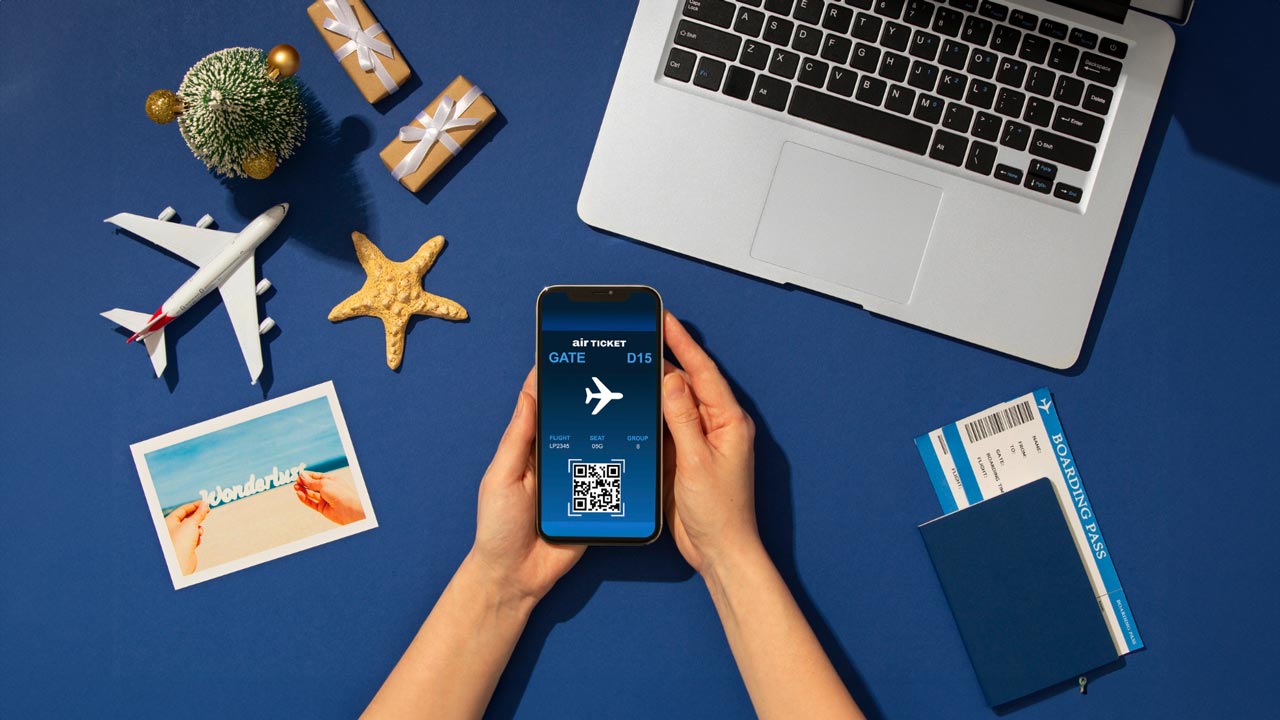Digital nomads and Cyber Security, remote and protected
The global economy's dynamics have evolved. The term “digital economy” refers to integrating information technologies into the life cycle of goods and services, including production, marketing, and consumption. It emphasizes how industries leverage technology's growth to innovate, creating or adapting products to stay competitive.
In its Threat Landscape Report 2024 ENISA iidentifies seven main Cybersecurity threats led by ransomware, malware, social engineering, threat against data, threat against availability: denial of service (DDoS), information manipulation and interference, and supply chain attacks.
All this by observing 11,079 incidents, 322 of them specifically targeting two or more EU member states. In addition, different types of motivations are attributed to the threat actors, such as financial gain, espionage, destruction and ideology.
Cyber-threats to digital nomads
In a world marked by geopolitical tensions, complexity, acceleration and uncertainty, how should organizations strategically position their digitally nomadic workforce to address potential Cyber Security challenges arising from diverse regulatory environments, nation-state sponsored threats and instability?
More and more people are becoming users of Internet-connected devices, from cell phones and computers to smart watches and smart bracelets. This connectivity allows them to participate in a global environment without limitations of time and space. As a result, the digital economy becomes accessible to millions of people around the world, facilitating the exchange of goods and services for both suppliers and consumers.
Did you know that every new destination and connection on public networks, such as hotels or coffee shops, poses cyberattack potential?
✅ According to the World Youth Student and Educational Travel Confederation (WYSETC) estimated the number of digital nomads to exceed 40 million by 2023, with a projected growth of approximately 60 million by 2030 around the world.
Digital nomadism culture
After seeing everything that is happening in the current dynamics with the 'digital nomads' it is necessary to move to know the cyberspace where it has its origin in the digital ecosystem and was introduced by the American writer William Gibson in 1984 in his novel “Neuromancer”. Cyberspace encompasses elements such as the Internet, telecommunications networks, computer systems and embedded processors found in critical industries or essential services.
It represents a sophisticated environment shaped by the interaction of individuals, software and services using technological devices and connected networks. Unlike physical forms, cyberspace exists as a complex global domain. It is often referred to as the fifth domain, underscoring its strategic importance along with land, sea, air and space.
Given the constantly evolving nature of cyber threats, how can organizations cultivate a culture of adaptability, resilience and continuous learning among digital nomads to effectively counter emerging threats from sophisticated cyber attack schemes.
 Photo: Windows, Unsplash.
Photo: Windows, Unsplash.
Now, digital nomad ended up coined in 1997 by Tsugio Makimoto and David Manners, where they argue that it is a person who takes advantage of the potential and possibilities of current, emerging and disruptive technologies for the sake of the future where it combines and integrates with its natural impulse to travel, managing to live, work and exist on the move.
They usually telecommute and choose locations such as their homes, coworking, work cafes, countries, coffee shops or public libraries instead of a traditional fixed workspace, but what are the cyber risks they are exposed to, how can they protect themselves, and what impact does this lifestyle have on the dynamics of the cybersecurity culture of organizations?
The digital nomad culture represents a modern lifestyle and professional trend marked by adaptability, resilience, and flexible hours. These individuals challenge traditional corporate structures and hierarchies.
Digital nomads' Cyber-Security risks and threats
In today's increasingly interconnected world, the concept of work has evolved and more and more professionals are adopting this lifestyle, working from anywhere in the world with an Internet connection. While this style offers tremendous freedom, well-being and flexibility, it also presents unique cybersecurity challenges.
Nomads often rely on public or private Wi-Fi networks and may be using personal devices for work, making them susceptible to a range of cyber threats.
How can organizations balance the autonomy granted to digital nomads with the imperative of maintaining a centralized cybersecurity framework? What innovative approaches can be employed to empower individuals while ensuring collective cybersecurity resilience?
The cyber threat landscape is dynamic and multifaceted, reflecting the changing nature of cybersecurity challenges in the era of emerging and disruptive digital transformation. Beyond protecting professional data, their personal information remains at constant risk. For them, cybersecurity is not just an additional layer of protection, but an imperative, especially as they navigate the diverse digital terrains around the world.
The surface of exposure and attacks of digital nomads can be very wide and variant since some variables affect.
From my experience at the time of undertaking my destination as a nomad I consider aspects such as, among others:
- International positioning of the country with geopolitical perspective and tensions.
- Risk profile of the country.
- Cyber Security posture, target of cyberattacks, situations and developments.
- Legal framework for cybersecurity and data protection.
- Physical and environmental security.
- Airport security, software and technologies that are allowed to be used in that country and those that are not.
- Methods of confiscation and control by the country's authorities.
- Main media, law enforcement agencies and bodies.
These are some of the risks to which we may be exposed:
- Public and insecure Wi-Fi networks.
- Political, legal and strategic aspects.
- Identity theft and social engineering.
- Interception or alteration of communications.
- Wiretapping and spying.
- Physical and environmental security.
- Device security.
- Cloud security.
- Downloading malicious files or software.
- Synchronization between devices.
- Weak authentication methods.
- Obsolete software.
- Geolocation.
Strategies for securing a cyber-threat environment
To navigate this landscape, there are shared responsibilities between digital nomads and organizations to adopt a proactive cybersecurity posture. This includes:
- Improving their practices and cyber hygiene by using secure and encrypted communication technologies.
- Implementing strong authentication methods.
- Adopting virtual private networks (VPNs).
- Stay informed about the latest cybersecurity threats, geopolitics and best practices.
- Ongoing and periodic monitoring of security controls.
- Protection of online activities are crucial to mitigate risks and keep this style safe and resilient.
✅ From my experience in this culture of digital nomadism and in digital native companies, it is very essential to be aware of the information we handle and its treatment: we do not know who is around us nor do we have control of the environment.
It is necessary to prioritize and balance the efforts of security controls to safeguard confidential data and its properties, which invites to have comprehensive cybersecurity policy with clear guidelines for teleworking and mobility.
Collaboration tools must be secure and approved by the organization to mitigate associated risks and their adverse effects.
But this doesn't just stop at technology controls; a culture of cybersecurity awareness and training with a focus on risk needs to be fostered in the interest of ensuring that nomads can be vigilant and take responsibility for maintaining a secure digital environment in their ecosystem. Prevention is the catalyst for awareness.
The dynamics of remote work, digital nomadism and digital native enterprises are underpinned by a cybersecurity conscious mindset, where a shared responsibility to fortify our digital environment, ensuring security, resilience and trust coexists. Remember that VPN is not everything, there are other things in security.
■ Access to EINSA Threat Landscape Report 2024 →
______
 Hybrid Cloud
Hybrid Cloud Cyber Security & NaaS
Cyber Security & NaaS AI & Data
AI & Data IoT & Connectivity
IoT & Connectivity Business Applications
Business Applications Intelligent Workplace
Intelligent Workplace Consulting & Professional Services
Consulting & Professional Services Small Medium Enterprise
Small Medium Enterprise Health and Social Care
Health and Social Care Industry
Industry Retail
Retail Tourism and Leisure
Tourism and Leisure Transport & Logistics
Transport & Logistics Energy & Utilities
Energy & Utilities Banking and Finance
Banking and Finance Sports
Sports Smart Cities
Smart Cities





